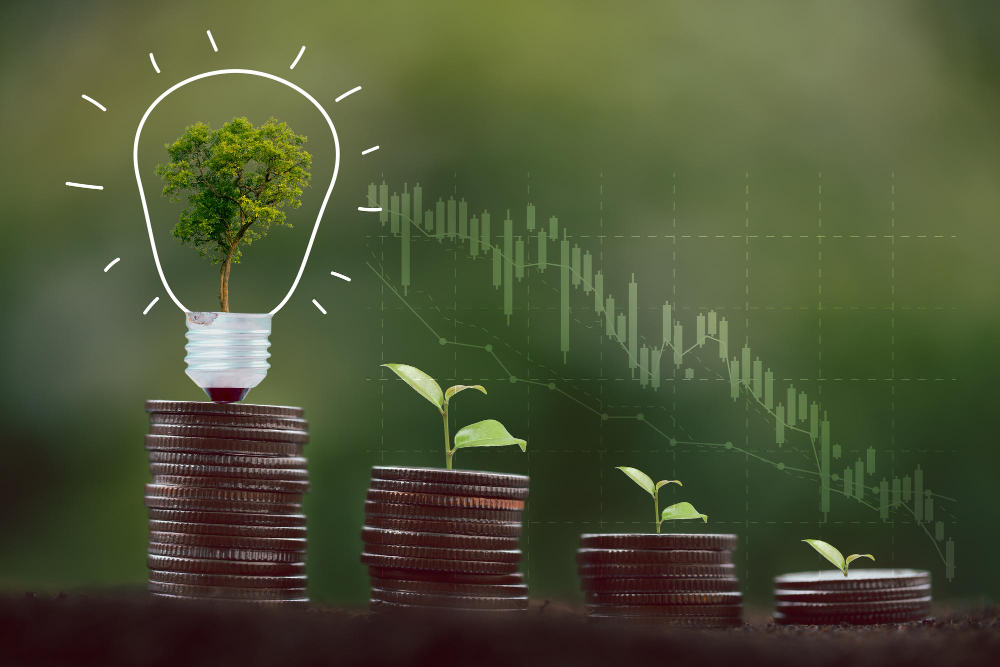Changing climate is an actual occurrence, and the world’s response to it is changing a wide range of sectors. So how can a future-focused investor be particular that their funds are being invested in climate change-fighting assets rather than in “bad” businesses that go against their moral principles? Additionally, how can you ensure that, even if you have faith in a sustainable investing approach, you aren’t settling for a subpar retirement savings plan in the process? Like many other things on Wall Street, the answers to these questions are nuanced and partly based on your financial objectives. The astonishing thing is that portfolio management for sustainable investment is doable with some preparation.

Sustainable Finance: What Is It?
Everyone should know the dangers of prioritizing profitability over all other considerations. There are several good stories of capitalism gone awry, from major scandals like Bernie Madoff and the collapse of Enron to fictitious villains like Gordon Gecko, who famously said that “greed is good” in the film Wall Street.
“sustainable finance” is a general term for a distinct way of thinking. It entails evaluating the effects of financial decisions on the environment and social justice. Focusing on sustainable finance may take many various forms. Still, from the standpoint of investment, it often entails putting your money behind businesses you believe are either contributing to the solution or, at the very least, not contributing to the problem. Investors that fall into the former category of contributing to the solution sometimes use “inclusionary” indices to find leaders in particular industries. One exchange-traded fund, or ETF, that mandates a specific proportion of a company’s income originates from sustainable energy-related operations is the $5 billion iShares Global Clean Energy ETF (ticker: ICLN).
The portfolio of over 100 equities includes manufacturers of solar energy systems like Enphase Energy Inc. (ENPH) and wind turbines like Vestas Wind Systems AS (VWDRY).
On the flip side, there is still a benefit in discovering organizations that aren’t necessarily creative but aren’t making things worse. This is demonstrated by “exclusionary” funds, which often exclude enterprises such as rifle manufacturers, coal miners, and firms participating in arctic oil and gas development. With a whopping $20 billion under management, the iShares ESG Aware MSCI USA ETF (ESGU) is the holy grail of this group. Nevertheless, the portfolio is not as focused on sustainability as the previous fund, with iPhone manufacturer Apple Inc. (AAPL), e-commerce behemoth Amazon.com Inc. (AMZN), and insurance business UnitedHealthGroup Inc. (UNH) among the leading holdings. However, some firms are on the list due to what they do not do. They do not, for example, sell firearms or manufacture “dirty” fossil fuels.
What are the essential sustainable finance metrics?
The fact that hundreds of additional funds are available in addition to these two significant iShares investments complicates sustainable investing portfolio management. However, there is no “correct” approach to quantify sustainability – or its absence – using a globally acknowledged measuring technique. That means it is up to the individual investors to determine which method is best for them. The iShares Global Clean Energy ETF is an excellent choice if you care about clean energy. Yet, open the hood and examine the list of 100 equities in this ETF. You’ll find publicly listed companies, including Consolidated Edison Inc. (ED), that produce a significant portion of their energy from traditional and renewable sources. Is it the type of investment you planned to support? Or else, you may need to look for another investment vehicle.
If you want a pure alternative energy investment, consider investing in a solar ETF such as the Invesco Solar ETF (TAN). Because it is a targeted play on solar technology, this fund does have greater volatility. Yet, with holdings such as Enphase Energy, First Solar Inc. (FSLR), and SolarEdge Technologies Inc. (SEDG), you can be confident that no fossil fuels are infiltrating the system. Or you’re fascinated by electric vehicles because of their environmental friendliness and the megatrend that might result in enormous profits. In such a scenario, this Global X Lithium & Battery Technologies ETF (LIT) could be worth a look. The $4 billion Global X ETF is intended to invest in battery technologies and infrastructure. This includes Tesla Inc.’s (TSLA) Powerwall integrated battery system, which provides additional safety and electricity whenever the sun (or the power grid) goes out.
Each of these ideas takes a unique approach. And determining which option is best is totally up to you, the investment objectives, and the type of sustainability taste you seek. The exchange-traded fund market provides excellent flexibility for long-term investing strategies. But, this is both a virtue and a disadvantage since it forces investors to think carefully about what they’re purchasing.
What Are ESG Scores?
But, the transition to sustainable finance continues with financing for green power enterprises. It also includes a generic corporate strategy that recognizes significant difficulties for firms in all industries. This idea is ESG, which stands for environmental, social, and governance factors influencing a company’s strategy. Intel Corp. (INTC), for example, has stated goals to achieve zero emissions of greenhouse gases throughout its international operations by 2040. Because the manufacturing business may be particularly carbon-intensive, this corporate approach would put INTC ahead of some of its competitors.
Investors care about more than simply environmental activities. Women and minorities are disadvantaged in top management in many firms. If you’re looking for the S in ESG, firms including General Motors Co. (GM) and Citigroup Inc. (C) may be worth emphasizing over their counterparts. Both have more women in top positions than their counterparts and Wall Street businesses. There’s also corporate governance to consider. Many publicly listed corporations, believe it or not, are not responsible to their shareholders, owing to either a significant proportion of ownership concentration or a dual share structure that deprives regular investors of voting rights. Meta Platforms Inc., Facebook’s parent company. (META) is a classic illustration of this since creator Mark Zuckerberg controls over half of the voting power in the corporation, allowing him to act nearly unilaterally.
On Wall Street, there is a growing trend to assess and rank every aspect of the ESG image so that investors may make informed judgments. Sadly, there are no commonly acknowledged criteria for what constitutes an “excellent” rating system for businesses. That implies that it is up to investors to educate themselves.
Here’s the excellent news: several companies are now working hard to improve the system. And it doesn’t matter if you pick Bloomberg’s ESG ratings, FTSE Russell’s ESG ratings, or S&P Global’s ESG scores as your index of choice, as long as you know what data those indexes use to establish their rankings. Indeed, it takes effort. Yet finding this information is simpler than ever, and if you’re concerned about sustainable investment, it’s worth the effort it takes to discover this expanding field.
What Exactly Is Greenwashing?
While several sustainable finance options are available and a plethora of information for prospective investors, there is also the potential for misinformation. This typically involves using “greenwashing” or a company portraying itself as environmentally benign rather than undertaking the hard work required to address actual sustainability challenges. Moreover, financial authorities are increasingly concerned with stopping this conduct in financial markets. As evidence, consider a May 2022 lawsuit against BNY Mellon Investment Advisor in which the business “implied in numerous claims that all investments within funds had passed an ESG quality evaluation, even though that was not often the case. As a result, the company committed to paying a $1.5 million penalty.
As previously stated, no global grading system or disclosure mechanism is in place to establish any level of consensus regarding whether an investment is “green” or otherwise. Thus it’s not unexpected that some companies engage in greenwashing or utilize their sustainability-lite criteria to slap an ESG label on anything, regardless of its actual impact. There are undoubtedly valuable measures available for those who are interested. Yet, because of the prevalence of greenwashing, anyone interested in sustainability investing portfolio management must educate themselves on what they’re purchasing and whose ESG ratings relate to the assets in the issue.



